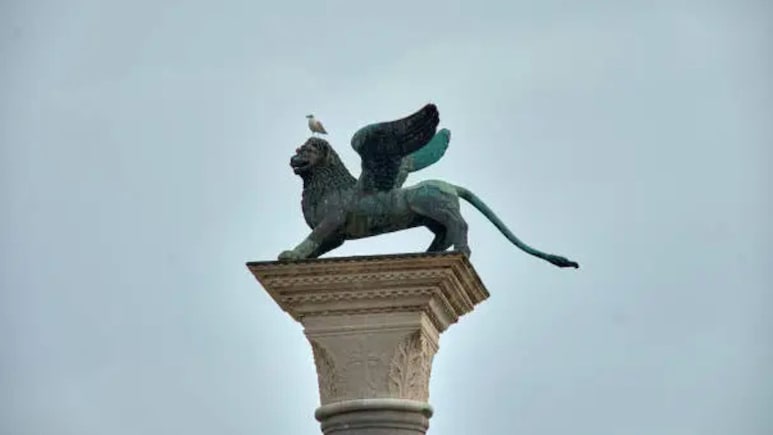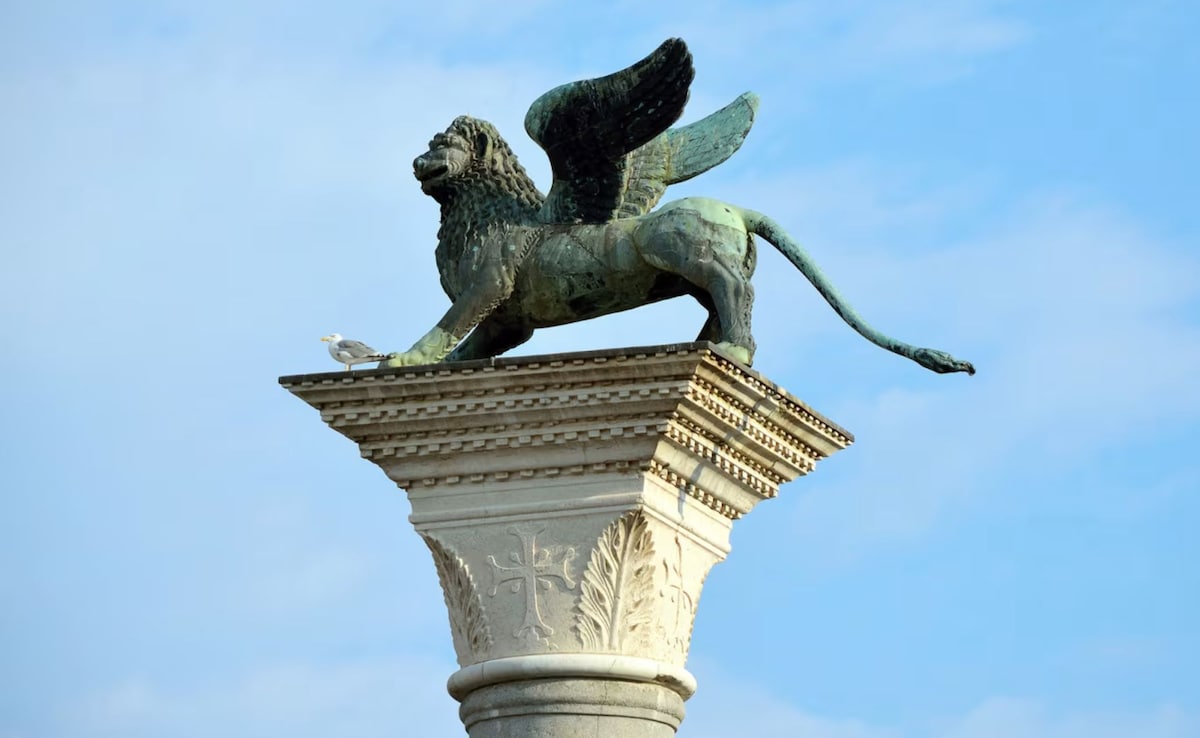
A mystery that has puzzled historians for centuries has finally been unraveled. The bronze winged lion statue that has stood at the heart of Venice's Piazza San Marco for hundreds of years is not of European origin. A new study reveals that the statue was crafted in China more than 1,000 years ago, originally serving as a tomb guardian before it made its way to Italy.
The Chinese Origins Of Venice's Lion
The findings were published in the journal Antiquity on September 4 by Massimo Vidale, archaeologist at the University of Padua, and his colleagues. According to their analysis, the statue's bronze came from the Lower Yangtze River region in East China, an area rich in copper, iron, zinc, and gold deposits. "Venice is a city full of mysteries, but one has been solved: the 'Lion' of St. Mark is Chinese, and he walked the Silk Road," Vidale said in a statement.
To trace the statue's origin, the researchers studied nine samples of the lion's bronze. Using mass spectrometry, they examined the ratios of lead isotopes present in the alloy. These ratios act like a fingerprint of the metal's geological source. Their comparisons with global databases revealed that the metal matched deposits from China's Lower Chang (Yangtze) River basin, the same source identified in earlier studies of artifacts from the Shang dynasty.

This discovery also helps explain why the Venetian lion looks unlike other European depictions of lions from the medieval period. Its features include pointed ears, a lion-like muzzle, wings, and possible horns, which bear a closer resemblance to zhenmushou, or Chinese tomb guardian statues of the Tang dynasty (AD 618-907).
How The Lion Reached Venice
According to a report by Live Science, researchers suggest that Venetian merchants may have played a crucial role in bringing the statue to Europe. In the 13th century, Niccolo and Maffeo Polo, the father and uncle of explorer Marco Polo, travelled the Silk Road and spent several years at the court of Kublai Khan in China. Vidale and his team propose that the brothers might have acquired the statue during their travels, recognising in it a form that could be reinterpreted as a lion.
During this time, the Republic of Venice had adopted the winged lion of St. Mark as its emblem, symbolising its maritime power. The statue, once transported to Venice, possibly in pieces, could have been refitted by local artisans to align with the city's iconic symbol. "In the general effort to spread the [Venetian] Republic's new powerful symbol, the Polos may have had the somewhat brazen idea of readapting the sculpture into a plausible (when viewed from afar) Winged Lion," the researchers wrote.
Although the precise path of the statue from China to Venice cannot be proven, the convergence of historical trade links and metallurgical evidence makes this scenario highly plausible.
Track Latest News Live on NDTV.com and get news updates from India and around the world

